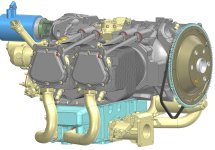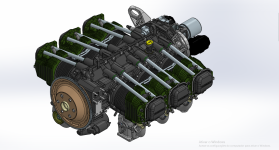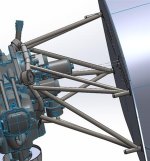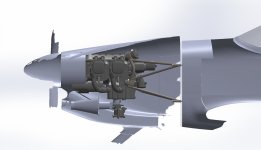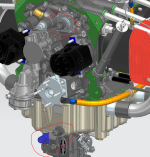Line up an experimental Lycoming 360 parallel valve, 360 angle valve, 390, 540 and hire a 3D scanning firm to spend a few hours to 3D scan them and generate a quality STEP file for each. Unobtanium^4 these days perhaps? 
Say with just a sump(horizontal vs vertical not a game changer?), crank case, cylinders, valve covers. No individual things like baffles or accessories. Just have 'em LIDAR the exteriors high resolution; no need for internal engine modelling. Now we can "CAD pick/evaluate" dimensions to make a scale model, or even send the file to a local shop to machine out of a foam block, etc. Perhaps individuals can even CAD trace the key dimensions make up a medium fidelity model like those wooden dinosaur skeletons, depending on individual needs and budgets to help with FWF fitting while waiting for the real deal...
Perhaps this is a chicken or the egg situation, but what is the best way forward and how much is a CAD file like this worth? $20, $50, $100, $150, more? How many of us really use CAD? Is this too niche? Who would have an example of each these engines at the same place at the same time and should money be pledged in advance for the project or should somebody just do it on their own initiative. Thoughts?
(To Admin: feel free to turn this into a poll; I couldn't find an option for this feature)
Say with just a sump(horizontal vs vertical not a game changer?), crank case, cylinders, valve covers. No individual things like baffles or accessories. Just have 'em LIDAR the exteriors high resolution; no need for internal engine modelling. Now we can "CAD pick/evaluate" dimensions to make a scale model, or even send the file to a local shop to machine out of a foam block, etc. Perhaps individuals can even CAD trace the key dimensions make up a medium fidelity model like those wooden dinosaur skeletons, depending on individual needs and budgets to help with FWF fitting while waiting for the real deal...
Perhaps this is a chicken or the egg situation, but what is the best way forward and how much is a CAD file like this worth? $20, $50, $100, $150, more? How many of us really use CAD? Is this too niche? Who would have an example of each these engines at the same place at the same time and should money be pledged in advance for the project or should somebody just do it on their own initiative. Thoughts?
(To Admin: feel free to turn this into a poll; I couldn't find an option for this feature)



